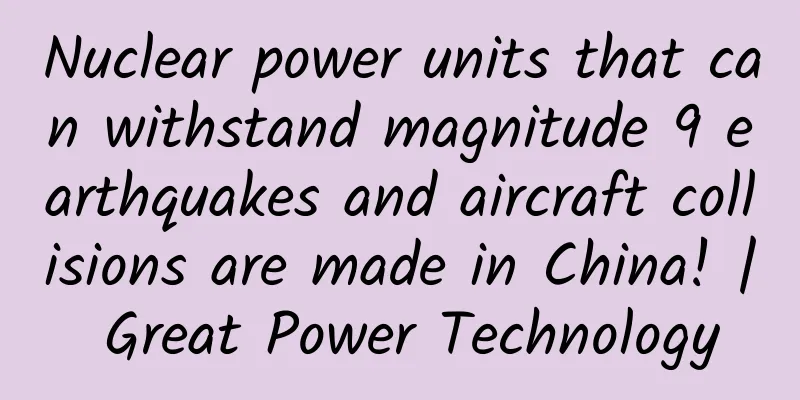Hong Kong's valuation has always been low, why did Wanda only think of delisting today?

|
"I want to walk from south to north, I want to walk from day to night, I want people to see me, but not know who I am..." In January 2016, Wang Jianlin sang at Wanda's annual meeting, and the video was played hundreds of millions of times, even attracting foreign media. Three months later, Wanda Commercial (03699.HK) announced that its controlling shareholder (Wanda Group) would repurchase all issued H shares on behalf of the joint offerors at HK$52.8 per share, with a total cost of approximately HK$34.455 billion. After the H share offer becomes unconditional, Wanda Commercial will withdraw its H share listing status on the Hong Kong Stock Exchange. Leaving Hong Kong and heading north only 15 months after listing was beyond the expectations of many people. The prophecy of "I want to go from south to north" has come true.Judging from Wanda’s statement and industry analysis, “being seriously undervalued” is the main reason for delisting. However, this view has three “loopholes” and cannot be justified: First of all, every advantage has its disadvantage, and vice versa. Hong Kong is one of the four major financial centers in the world, with a highly developed capital market. Listing, financing, and refinancing of companies are purely market behaviors, and many excellent companies are listed on the Hong Kong Stock Exchange. If you want to go public, you say how mature the Hong Kong capital market is, and if you want to delist, you say the valuation is low. It's really "two-faced". Secondly, the valuation of Hong Kong stocks has been low for a long time. It is impossible that Wanda has just discovered this. What was it doing before? Finally, Wanda chose the "A+H" model. The A-share listing process was fully launched in August last year, and delisting was not in the plan. The fundamental reason why Wanda Commercial gave up Hong Kong is that its "light asset" model has been initially verified. "De-real estate" in economic downturn In 2015, Wanda Commercial's total revenue was 124.2 billion, up 15.14% year-on-year. The year-on-year growth rates of its three main businesses, property sales, property leasing and hotel operations, were 11.74%, 31.2% and 23.83% respectively. The proportion of property sales in total revenue has dropped from 89.6% in 2011 to 82.5% in 2015. The proportion of property leasing and management revenue has steadily increased, reaching 10.9% in 2015. In 2015, the year-on-year growth rates of sales, leasing and hotel businesses were 12%, 31% and 24% respectively. In fact, the contract sales in 2015 only increased by 2.45%, an increase of only 3.93 billion yuan from 160.15 billion yuan in 2014. However, Wanda Commercial recognized 62.5% of the contract sales in 2015 as revenue, while it only recognized 57.3% in 2014. This is a standard practice for real estate companies to "adjust" revenue. When business is booming, the recognition ratio is low, and vice versa, the recognition ratio is high, in order to make the revenue appear to maintain stable growth. The contribution of property sales to revenue is an order of magnitude higher than that of property leasing, but the gross profit margin of the former is low and has been declining year by year. In 2012, the gross profit margin of property sales business was as high as 51%, but it dropped to 38% in 2015; while the gross profit margin of property leasing and property management gradually increased to 72%. By 2015, the contribution of property sales and property leasing to the overall gross profit was 77.2% and 19.5% respectively. Wang Jianlin's goal is: within three years, the proportion of rental income in net profit will exceed 50%. Wang Jianlin has made the worst-case scenario for the macroeconomic situation. At the "Xishuangbanna" annual meeting, he predicted that real estate sales revenue in 2016 might drop significantly. It is believed that contract sales will drop from 164 billion in 2015 to around 130 billion, and may drop below 100 billion in the future. Other businesses such as property leasing, hotel management, and cultural entertainment will continue to grow, and the proportion of property sales in Wanda Group's total revenue will drop from 86.1% in 2015 to below 50%. Due to the macroeconomic downturn, Wanda has significantly lowered its sales target and gradually reduced the impact of the economic cycle by "de-real estate". In sharp contrast, Evergrande and Vanke are aiming for 200 billion and 300 billion respectively. Wanda’s value does not lie in how many houses it sells The core of Wanda's model can be summarized as "selling to support renting": The first step is to acquire land at a low price in the non-core area of the city to be settled and build Wanda Plaza; The second step is to sell part of the completed properties, and the cash flow obtained will cover the costs of land acquisition, construction, etc.; The third step is to sell some properties and then “rent but not sell” the remaining properties while screening and supervising the tenants; The fourth step is to regularly revalue “investment properties” and obtain “fair value increase” benefits as Wanda Plaza is completed and opened for business and its popularity gradually increases. For example, the fair value increase in 2015 reached 17.2 billion, equivalent to 57% of the net profit in the same period. In 2011 and 2012, the increase in fair value of investment properties was equivalent to 71% and 79% of net profit respectively. On the one hand, it was because the net profit in those years was not as high as that in 2015, and on the other hand, it reflected Wanda's current "restraint" in revaluing fair values. In 2011, Wanda Commercial had a "fair value increase" of 14 billion, accounting for 12.6% of its "investment properties" at the end of the year. In 2015, although the "fair value increase" was 17.23 billion, it only accounted for 5.6% of its "investment properties" at the end of the year. As of the end of 2015, Wanda Commercial had opened 133 Wanda shopping centers and 72 hotels, and held investment properties with a total area of more than 26 million square meters, ranking first among global real estate companies. If "Vanke's value lies in how many houses it has sold", Wanda's value lies in "how many houses it has not sold". Wang Jianlin found a way to "reduce the burden" 1. The debt ratio has been decreasing year by year Since 2011, Wanda Commercial's total assets have expanded from more than 250 billion to 640 billion, a net increase of nearly 400 billion. What is commendable is that the total asset-liability ratio has dropped from 76% to 71%. In addition to the reduction in the total asset-liability ratio, there are two points worth noting in Wanda Commercial's debt structure: First, banks have too many loans and heavy interest burdens. In 2015, the loan balance reached 154 billion yuan, doubling from 2011, but 20 billion yuan less than 2014. This was mainly because the funds raised from the IPO were used to repay part of the loans. By the end of 2015, short-term loans within one year and long-term loans over five years were 41.9 billion and 53.7 billion respectively. The total interest expenditure for the whole year reached 12.6 billion, which was 2.4 billion more than the total salary and welfare expenditure of 60,000 employees for the whole year! Second, “customer advances” (mainly pre-sales) are an important financing method. Since 2013, Wanda Commercial’s debt in this area has exceeded 100 billion yuan, reaching 133.7 billion yuan in 2015, close to the annual contract sales amount and almost the same as the bank’s loan balance. According to the company's financial principles, customer advance payment is a better financing method than bank loans. That is, there is no need to pay interest or pay in cash, and it is enough to ensure that the product can be delivered when it is due. However, Wanda Commercial excluded customer advances when calculating its debt-to-asset ratio, and the result of 50% was too optimistic, because no matter what, "you have to pay for what you have done." The hundreds of billions of pre-sale funds reflect Wanda’s comprehensive capabilities, and the premise is that users have full confidence in the brand value and the ability to take possession of the houses on schedule, which is not something that any real estate company can do. 2. Land reserves and capital commitment In 2014 and 2015, the total volume and structure of Wanda Commercial's land reserves (based on planned building area) tended to be stable, with the core "properties under construction" accounting for 47.35 million square meters and 47.98 million square meters respectively. As of the end of 2015, Wanda Commercial’s total liabilities and capital commitments exceeded 588 billion! 3. “Asset-light” to “reduce burden” Everyone knows that Wang Jianlin is the richest man, but few people know that he is also the "biggest debtor" in China, because no one in China has more debt than him. In 2015, the biggest gain for Wanda and Wang Jianlin himself was to find a good way to "reduce the debt" through the exploration of the "light asset model". Wang Jianlin's interpretation of asset-light is: when investing in and building Wanda Plaza, all funds are provided by others, while Wanda is responsible for site selection, design, construction, investment attraction and management, using the Wanda Plaza brand and Wanda's globally unique commercial information management system "Huiyun". The rental income generated is divided between Wanda and the investor in a certain proportion. In October 2015, Wanda Commercial transferred five project companies in Fuyang, Binzhou, Yantai, Yingkou, Lianyungang and other places. The 4.22 billion yuan required to build Wanda Plaza in the above-mentioned areas was raised by the buyer, and Wanda Commercial will enjoy 30% of the net rental income after the property is completed. This transaction has become a model of Wanda's "light asset model". In 2016, Wanda plans to open more than 50 Wanda Plazas, of which more than 20 will adopt the "light asset model", accounting for 40%. Wang Jianlin hopes that after 2017, Wanda will open at least 50 Wanda Plazas every year, of which more than 40 will be "light asset", accounting for 80%. In the near future, most Wanda Plazas will not be invested by Wanda, nor even built by Wanda. In 2015, Wanda began to cooperate with Vanke, handing over the development of multiple projects to the latter. According to Vanke's Secretary Tan Huajie, the scale of the cooperation between the two parties will exceed 100 billion yuan. Similar to the fact that it received hundreds of billions of yuan in pre-sale funds, Wanda’s “light asset model” is not something that all real estate companies can learn from. Why give up “A+H”? Wanda Commercial originally planned to adopt the "A+H" share model. In December 2014, the company raised HK$30.678 billion by issuing H shares in Hong Kong (partially exercising the over-allotment option). In August 2015, the shareholders' meeting approved the issuance of no more than 250 million A shares and the raising of no more than 12 billion. On September 2 of the same year, the company submitted the prospectus to the China Securities Regulatory Commission. The biggest advantage of the "A+H" model is the convenience of financing. In addition to being able to conduct two IPOs, the more important thing is the follow-up financing in Hong Kong. Hong Kong is one of the four major international financial centers with a mature and highly developed capital market. Corporate financing and two financings are purely market behaviors. In contrast, in the mainland capital market, refinancing is a huge "favor". Companies as powerful as Ping An of China, China Life, and PetroChina cannot raise funds whenever they want. Especially for the real estate industry, when the government determines that the housing market is overheated and housing prices are rising too fast, it will stop all financing and refinancing of listed real estate companies. The biggest drawback of the "A+H" model is that the undervalued H shares become the "short board" of the barrel, dragging down the A shares and lowering the company's overall valuation level. The discount of "A+H" is the best illustration of how low Hong Kong's valuation is. On June 2, 2016, the price of China Southern Airlines' A shares was 7.08 yuan, and its H shares were 3.98 Hong Kong dollars, with an H/A ratio of 56%. China Life's H/A ratio was 68%, BYD's was less than 64%, GAC Group's was only 32%, and real estate developer BBMG's was only 25.52%... If a company has a net profit of 200 million yuan and a total share capital of 100 million yuan, and the price-earnings ratio after listing on the A-share market is 15 times, then the share price is 30 yuan and the market value is 3 billion yuan. If the company issues 20 million H shares, due to the huge difference in valuation levels between the two places, investors go south to "pick up bargains". In the end, the prices of A shares and H shares stabilized at 20 yuan and 15 Hong Kong dollars respectively, the H/A price ratio was 60%, and the total market value was about 1.84 billion yuan, which was dragged down by 38.7%! The price-to-earnings ratio of real estate companies listed on the A-share market is generally more than ten times, such as 21 times for COFCO Real Estate, 18 times for Zhujiang Industrial, 15 times for Vanke, 14 times for Gemdale, and 13 times for Financial Street. In 2015, Wanda Commercial's net profit exceeded 30 billion yuan. If it were listed on the A-share market, its market value would reach 450 billion yuan at a price-earnings ratio of 15 times. Before the privatization proposal, the price of Wanda Commercial's H-shares corresponded to a market value of about 120 billion yuan, with a price-earnings ratio of only 4 times! After the issuance of A shares, Wanda Commercial's total share capital will reach 4.777 billion shares, of which 652 million are H shares, accounting for 13.66%. If H shares drag down A shares by 20%, Wang Jianlin will lose hundreds of billions of yuan in wealth, which is really not worth the loss. The Hong Kong market has been undervalued for a long time. Why did Wanda Commercial delist today on the grounds of undervaluation? What had it been doing before? The most important reason is probably the great success of its young asset model in 2015. Although it could only raise 12 billion yuan at one time when listed on the A-share market, it had to leave subsequent financing to fate. Despite not having gone public for financing for so many years, Wanda has still overcome financial difficulties and reached its current scale. With its "light asset" model, it is even more confident. As a winner of Toutiao's Qingyun Plan and Baijiahao's Bai+ Plan, the 2019 Baidu Digital Author of the Year, the Baijiahao's Most Popular Author in the Technology Field, the 2019 Sogou Technology and Culture Author, and the 2021 Baijiahao Quarterly Influential Creator, he has won many awards, including the 2013 Sohu Best Industry Media Person, the 2015 China New Media Entrepreneurship Competition Beijing Third Place, the 2015 Guangmang Experience Award, the 2015 China New Media Entrepreneurship Competition Finals Third Place, and the 2018 Baidu Dynamic Annual Powerful Celebrity. |
<<: Fashion + AI: Can we create another wearable craze?
Recommend
Bill Gates: Artificial intelligence and gene therapy can save lives
Microsoft founder Bill Gates believes that artifi...
Why did the ancients prefer plum blossoms? 丨 A brief history of plum blossom appreciation
Produced by: Science Popularization China Author:...
Putting two electric fans together can cause suffocation to death? This is something you really need to pay attention to in the summer...
In the summer of 1973, 37-year-old Korean man Lee...
Cool Android interactive animation and visual effects: High imitation of the Yinyuetai playback page
The new version of the Yin Yue Tai APP has a very...
These foods have no expiration date, don’t throw them away foolishly!
This article was reviewed by Pa Li Ze, chief phys...
In-depth reveal of the search promotion ranking mechanism!
Yesterday a classmate asked me: "Why is the ...
Nexus and compact cameras couldn't save HTC from rapid decline
HTC released a number of new products in New York...
Feed ads not working well? Here are a few hidden optimization tips!
Before starting this article, let’s take a look a...
Dell Inspiron 12 is not only about changing your mindset, it's also about being online and on standby.
In recent years, the emergence of a large number ...
my country's earliest "genetic" modification project began 5,000 years ago!
"The market is lined with pearls and jade, a...
Experts reveal: Playing with your phone while charging isn't that scary
Many people have the habit of playing with their ...
B2B companies, how to operate private domain traffic
This article starts from how B2B uses hot spots t...
Read the full version of The Evil King Chases His Wife for free, and download the txt version of The Evil King Chases His Wife for free!
The txt e-book novel "The Evil King Chasing ...
2022, 10 major trends in Xiaohongshu operations
2022 will be a very important year in the history...
Changsha tea tasting takeaway arrangement, tea service contact information, very reliable
Changsha tea takeaway arrangement, tea service co...









